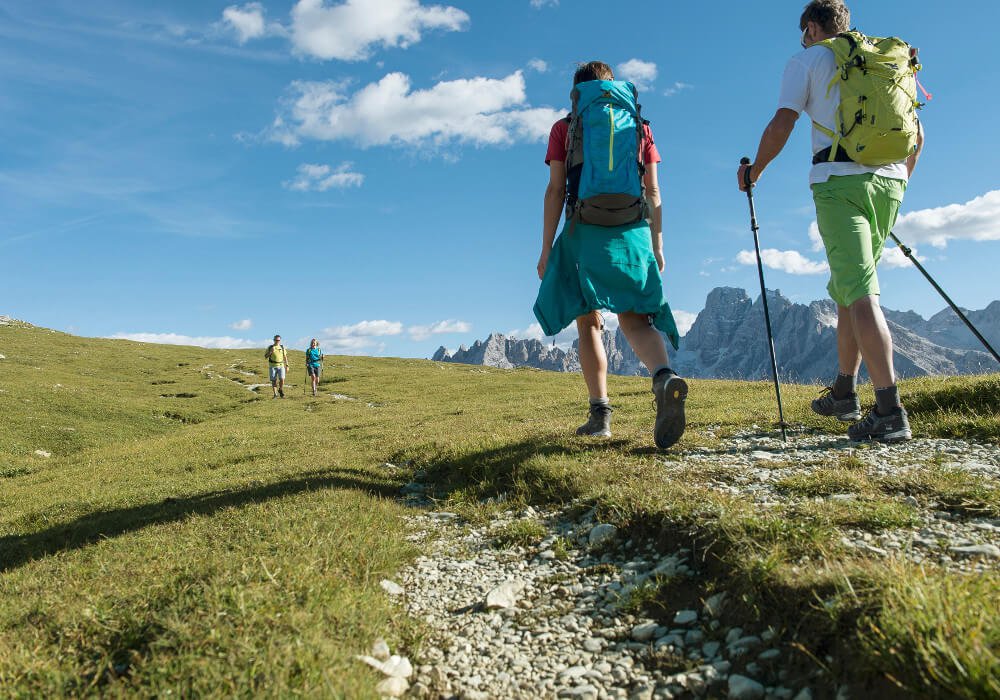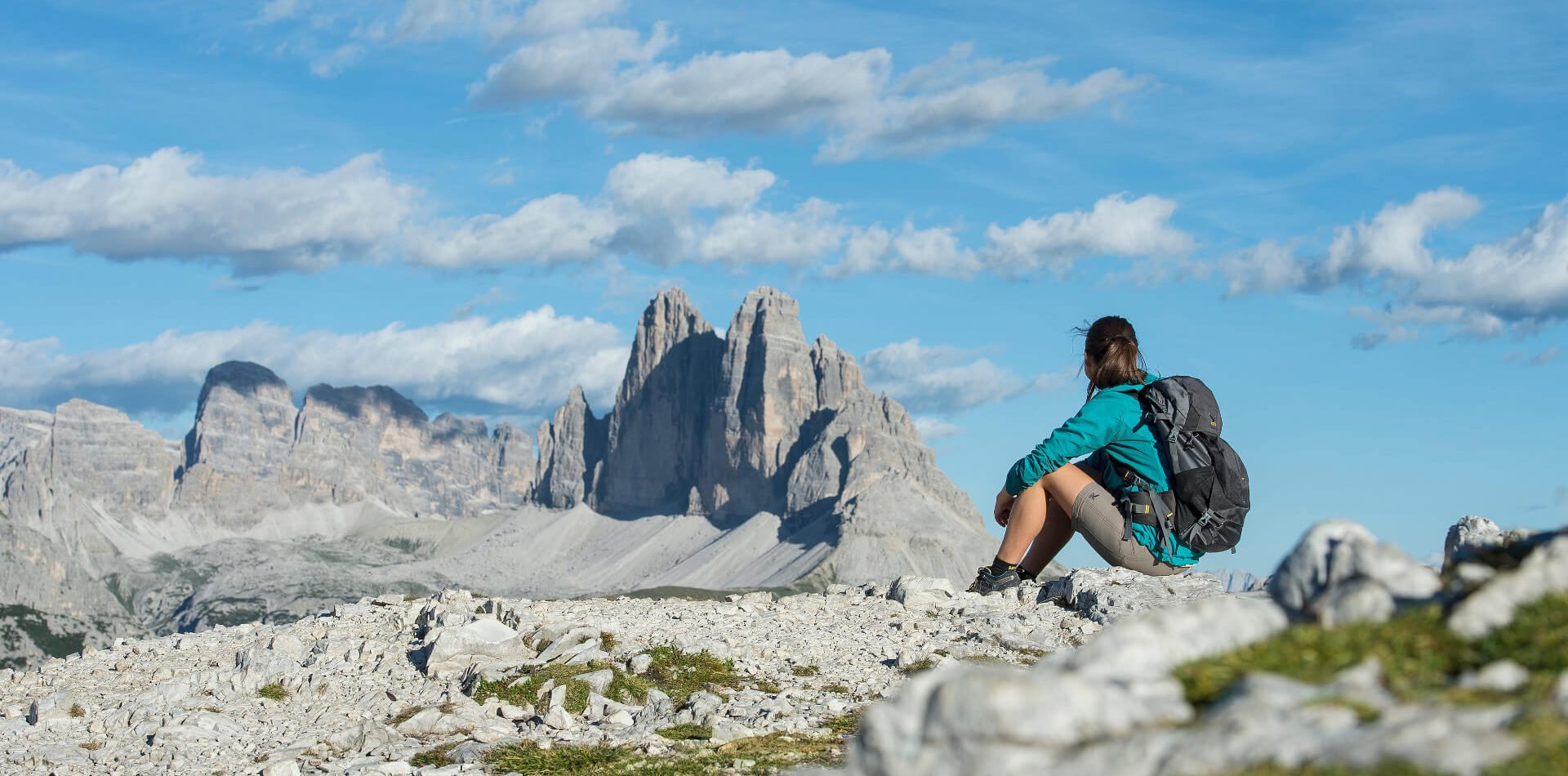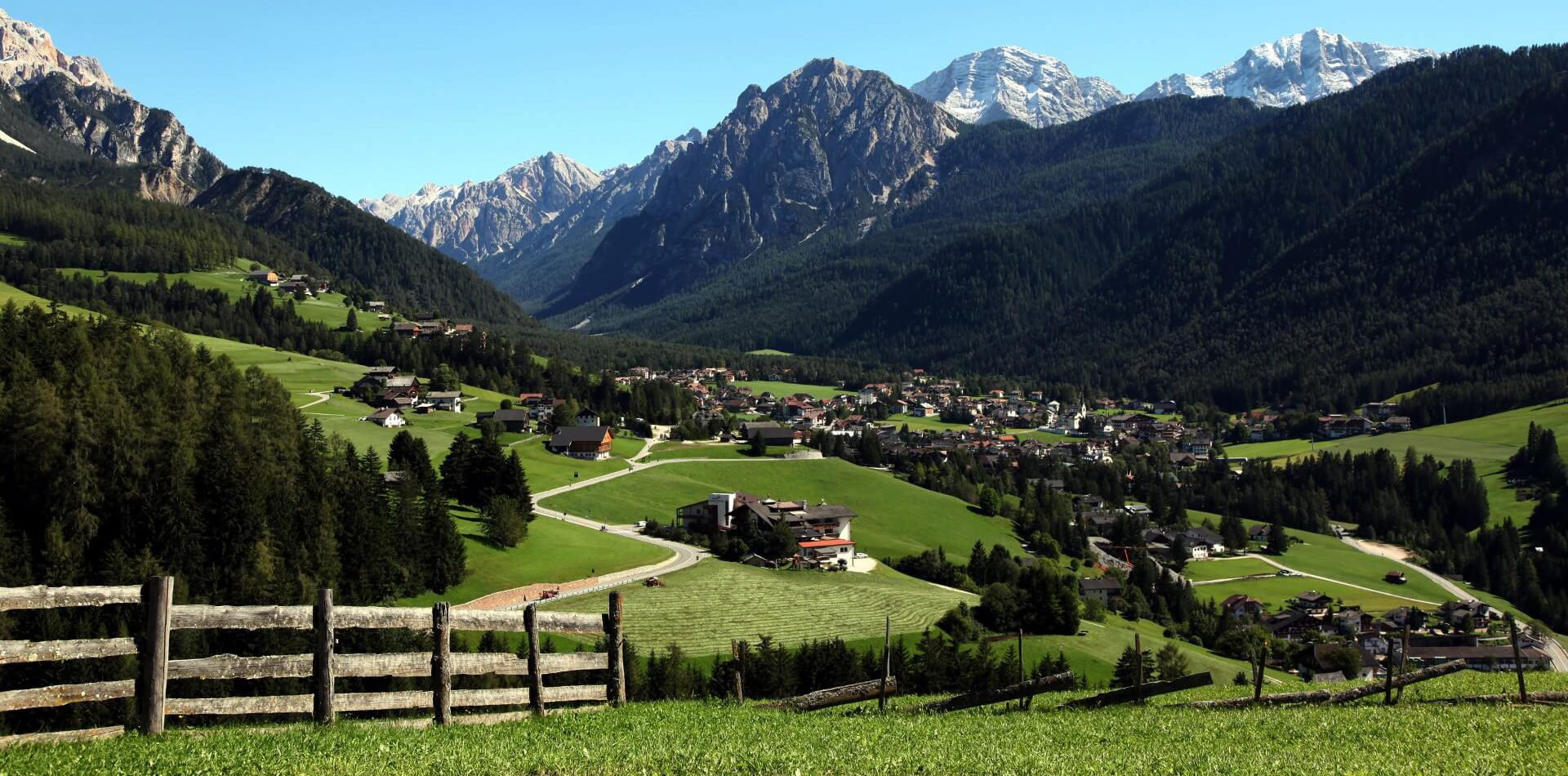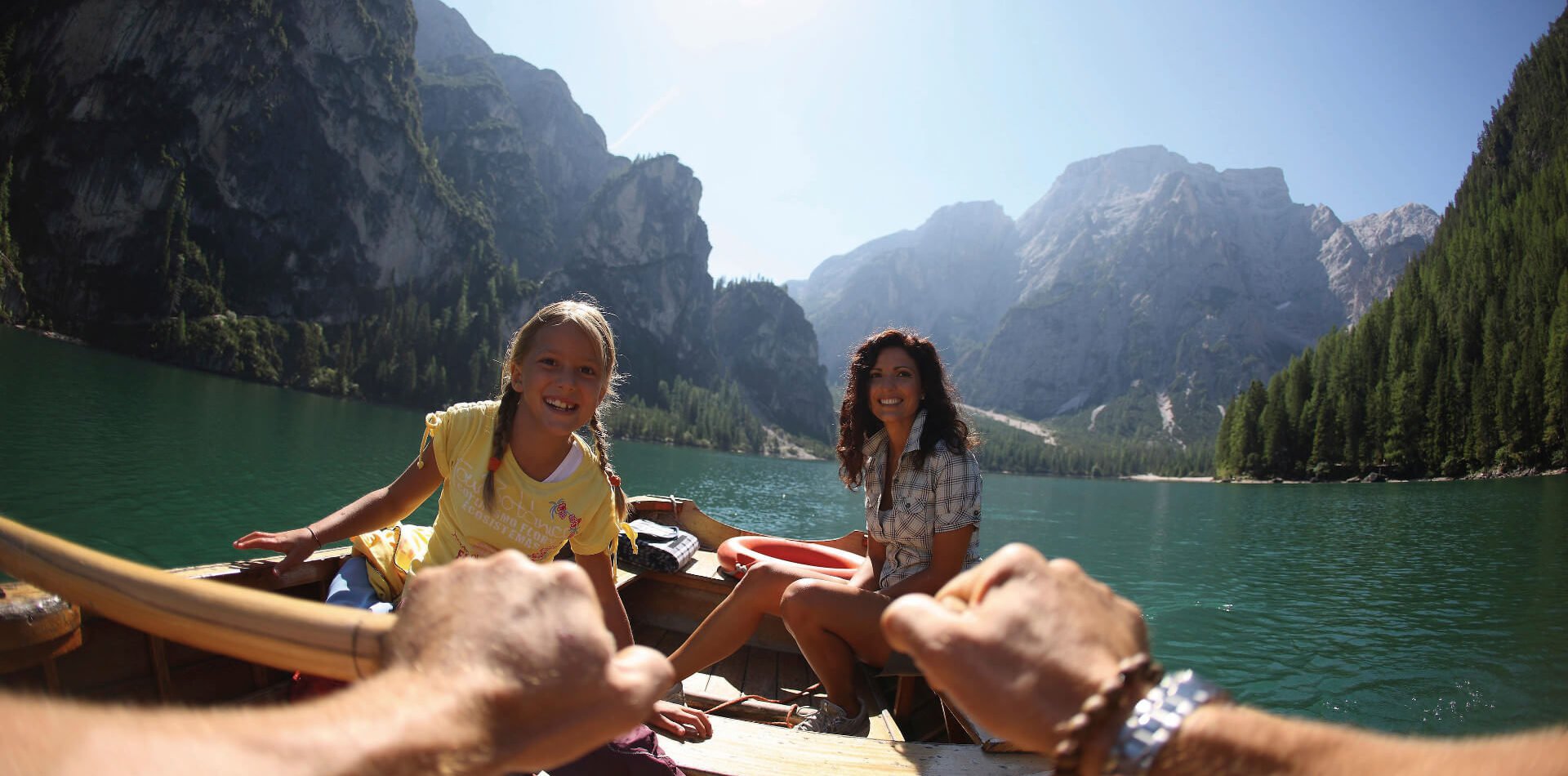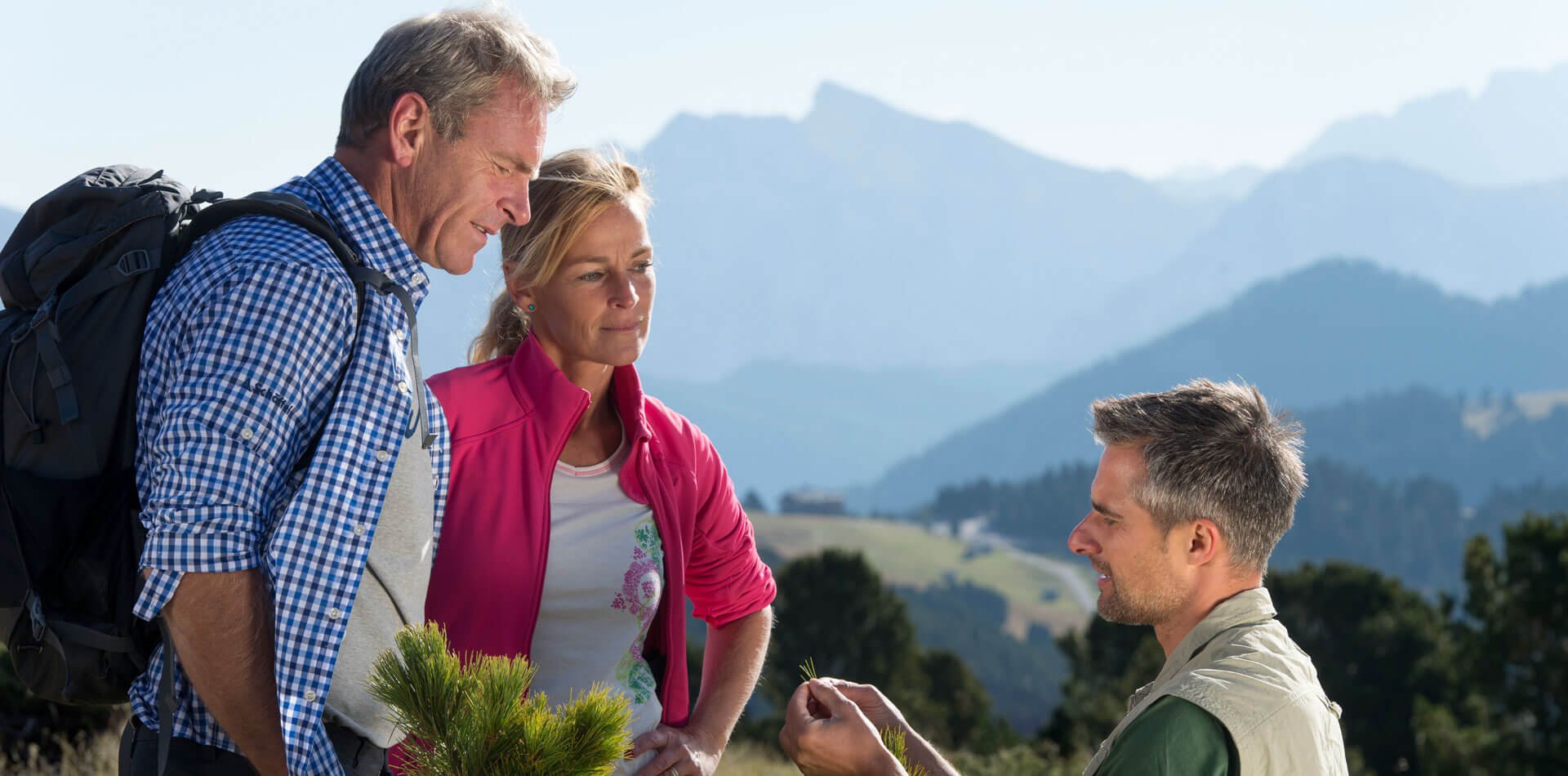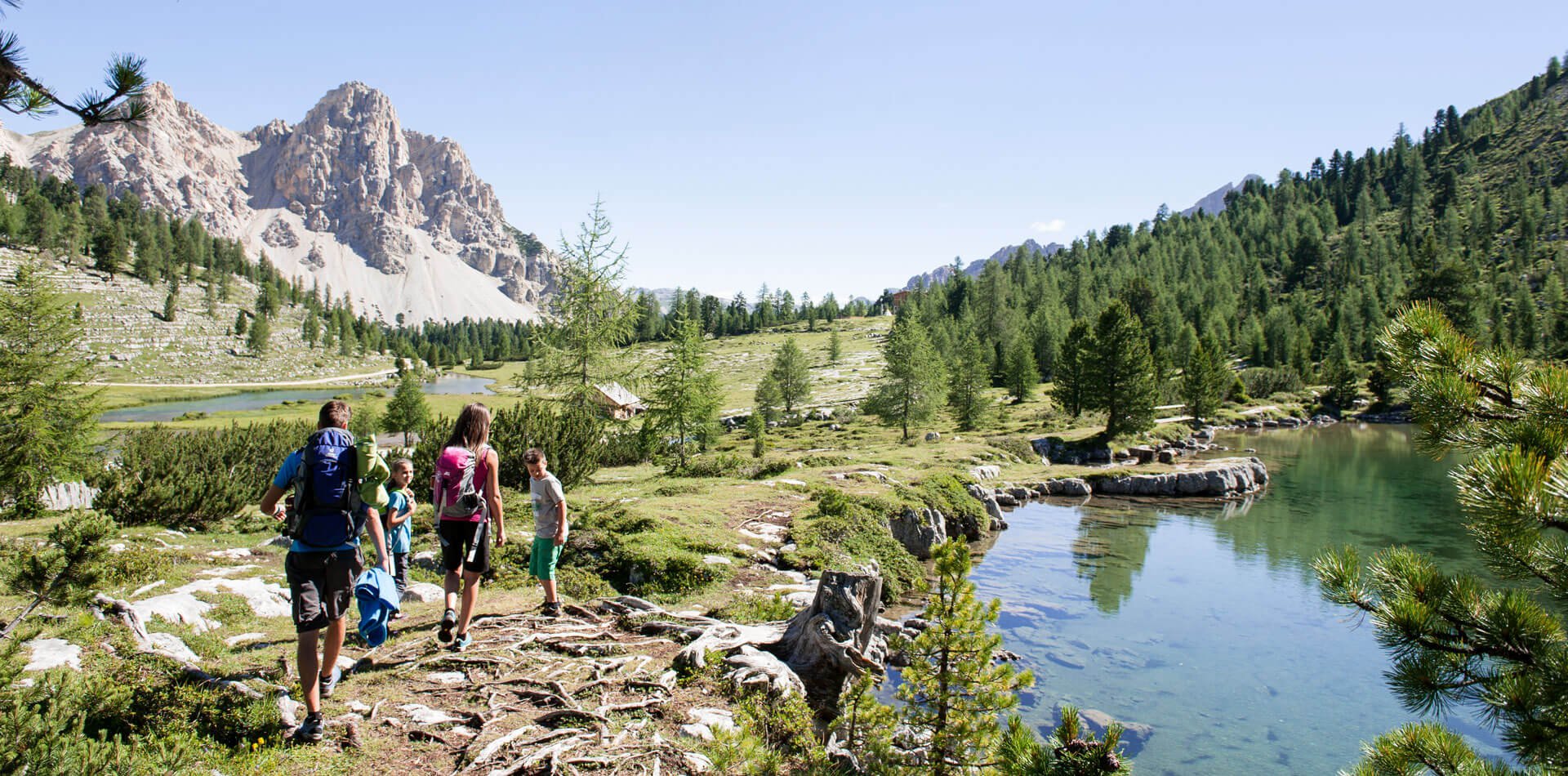Hiking in San Vigilio Your hiking holiday in the Dolomites

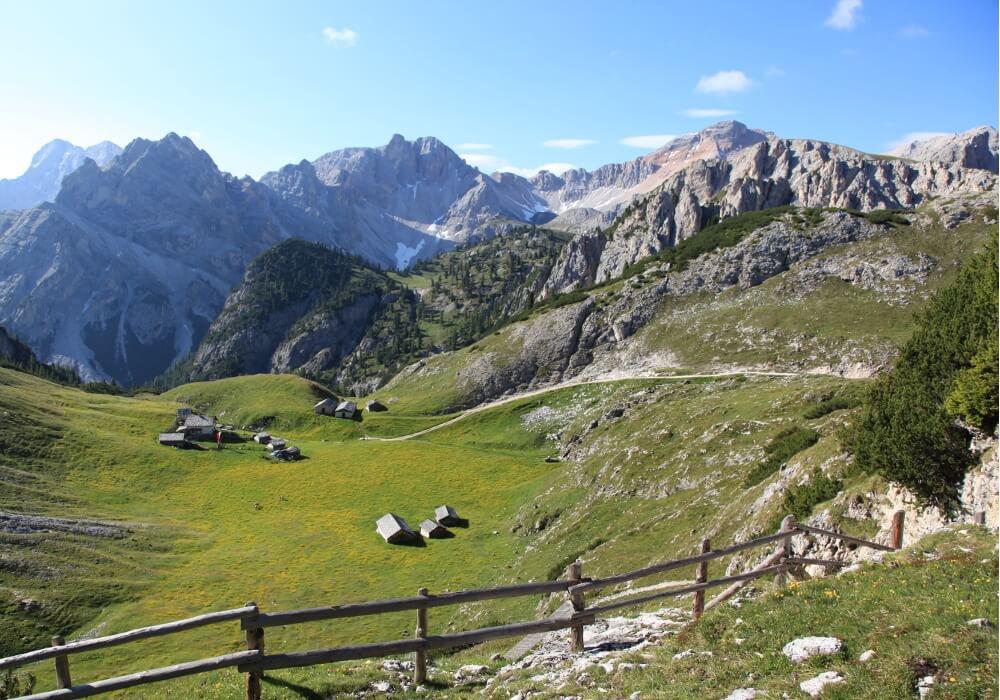
Close to heaven Hiking in the Dolomites

If you wish to be active, just put on your hiking boots. More than 250 trails await you around San Vigilio in the Badia Valley. Breath-taking views and scenic trails offer plenty of variety for both, beginners, and professionals. Hiking is as popular with families as it is with true adventurers. The fresh air, the wild nature, and the opportunity to reach your physical limits will motivate you and make your hiking holiday in the Badia Valley an unforgettable experience.
It is worth gathering some information about available routes and tours beforehand. For families, of course, easier hikes are available, so that even the youngest members may enjoy the experience.
Tour 1: Passo Furcia (easy)
A nice, easy hike – The trail to Passo Furcia is ideal for a hiking holiday in the Dolomites with children. First, you take the cable car Miara and reach the hamlet of Rara. Now, simply turn right onto the Forest Path 1 and walk up to the Passo Furcia. A truly breath-taking view awaits you and your loved ones up there.
- Duration: 3.5 h
- Distance: 10.5 km
- Altitude meters: 550 m
- max. height: 1,747 m
Tour 2: From San Vigilio to Santa Croce (difficult)
One of many difficult hiking and climbing tours leads you directly from San Vigilio to the pilgrimage site of Santa Croce.
You start directly in the village and walk along the valley path to Ciamaor. There, turn right onto the Marker 13 to Rit until you reach Spescia. Now follow the path no. 15 across the Armentara meadows to the hospice and place of pilgrimage Santa Croce.
- Duration: 5 h
- Distance: 15.5 km
- Altitude meters: 1,210 m
- max. height: 2,048 m
The National Park Fanes Sennes Braies

